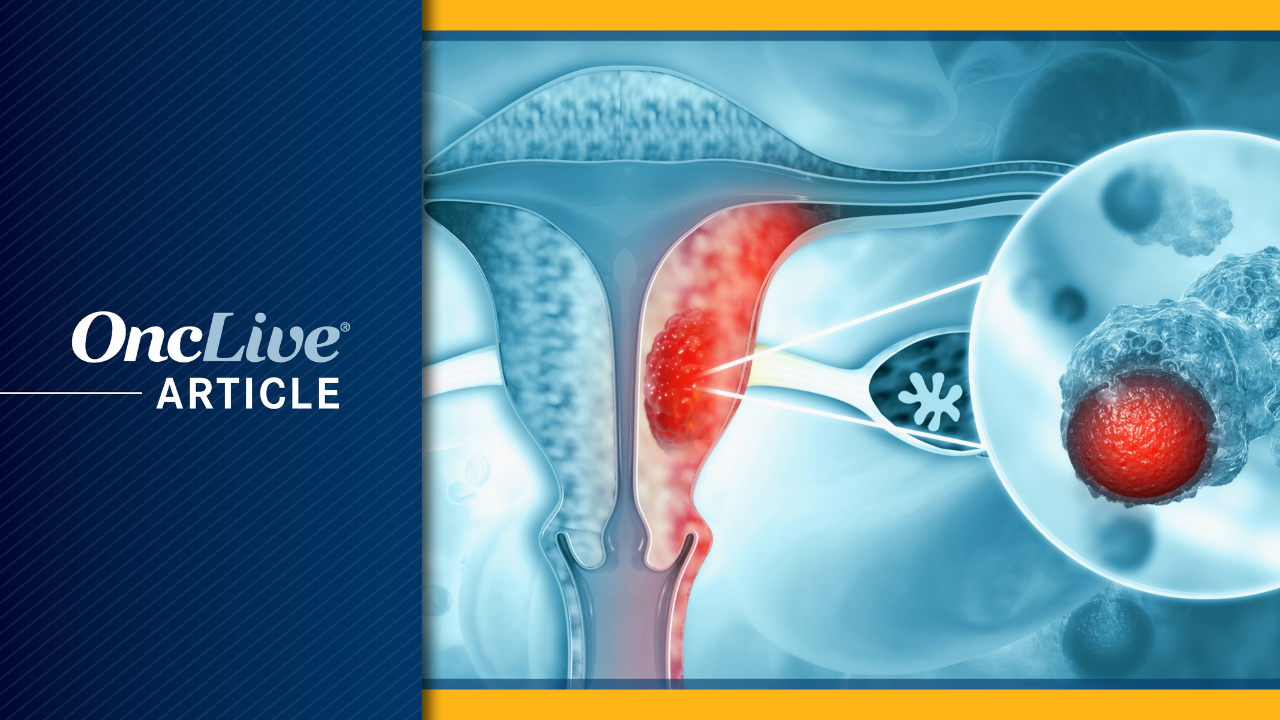Findings from a biomarker analysis of the phase 3 AtTEnd trial (NCT03603184) indicate that high whole-exome sequencing (WES)–aneuploidy scores (W-AS) may serve as a prognostic factor for patients with mismatch repair–deficient (dMMR) advanced or recurrent endometrial cancer undergoing immunotherapy. Data presented at the 2025 ESMO Congress revealed that patients with higher W-AS experienced poorer outcomes when treated with atezolizumab (Tecentriq) combined with chemotherapy.
The analysis involved an overall evaluable population of 110 dMMR patients. Among these, 90.9% had low W-AS while 9.1% exhibited high W-AS. In the atezolizumab treatment group, 15.0% had high W-AS, compared to 5.7% in the placebo arm. The results showed stark differences in progression-free survival (PFS) between the two groups.
Patients with low W-AS who received atezolizumab plus chemotherapy had a median PFS that was not evaluable (NE; 95% confidence interval [CI], 17.2-NE). In contrast, those in the placebo group achieved a median PFS of 7.1 months (95% CI, 6.2-10.1). The hazard ratio (HR) for PFS was 0.28 (95% CI, 0.16-0.47; log-rank P < .0001), indicating a significant benefit from the combination therapy. Conversely, the high W-AS subgroup saw a median PFS of 4.2 months (95% CI, 1.9-6.5) with atezolizumab, while those in the placebo arm had a median PFS of 7.0 months (95% CI, 4.6-NE), yielding an HR of 3.60 (95% CI, 0.71-18.29; log-rank P = .1006).
In terms of overall survival (OS), the low W-AS subgroup demonstrated significant differences; the atezolizumab group had a median OS that was NE compared to 37.2 months (95% CI, 10.1-NE) for the placebo group (HR, 0.40; 95% CI, 0.21-0.77; log-rank P = .0043). In the high W-AS population, median OS was 11.2 months (95% CI, 3.0-60.9) for the atezolizumab group versus 31.8 months (95% CI, 8.9-NE) for the placebo arm (HR, 1.36; 95% CI, 0.25-7.55; log-rank P = .7238).
During the presentation, lead study author Luca Mazzarella, MD, PhD, of DIMA, IEO IRCCS in Milan, Italy, stated, “The W-AS may actually identify approximately 10% of patients with dMMR endometrial cancer who do not benefit from the addition of immunotherapy to chemotherapy.” Mazzarella emphasized the need for further validation as the current population size is limited.
The AtTEnd trial is a multicenter, double-blind, randomized, placebo-controlled study that enrolled patients aged 18 and older with advanced or recurrent endometrial carcinoma or carcinosarcoma, regardless of MMR status. Participants were randomly assigned in a 2:1 ratio to receive either atezolizumab plus carboplatin and paclitaxel or a placebo with the same chemotherapy regimen. Treatment continued until disease progression.
Previous findings from the trial indicated that at a median follow-up of 28.3 months (interquartile range, 21.2-37.6), patients in the atezolizumab group (n = 362) experienced a median PFS that was not reported (NR; 95% CI, 12.4-NE) versus 6.9 months (95% CI, 6.3-10.1) for those on placebo (n = 189; HR, 0.36; 95% CI, 0.23-0.57; P = .0005).
The study analyzed 234 samples for WES, including 110 from patients with dMMR tumors, which accounted for 88% of the total. Samples were also collected from 121 of 409 patients with non-dMMR tumors, with ongoing work to assess this group.
In examining gene mutations associated with endometrial cancer, researchers identified several common genes among both dMMR and non-dMMR subgroups. These included PTEN (63%), TP53 (35%), MSH6 (11%), and BRCA2 (8%). Notably, only one patient (0.4%) exhibited a POLE mutation, while 6.0% of the samples were both dMMR and carried a BRCA mutation.
Among the dMMR samples, the most prevalent gene variants were PTEN (44%), PIK3CA (41%), and TP53 (24%). Additionally, 20.9% of dMMR tumors harbored mutations in CTNNB1 and/or APC genes, which were linked to worse PFS outcomes.
While the findings are promising, Mazzarella cautioned that the results should not be considered definitive due to the study’s limited population size. Further validation in larger cohorts is necessary to solidify these conclusions.





































































